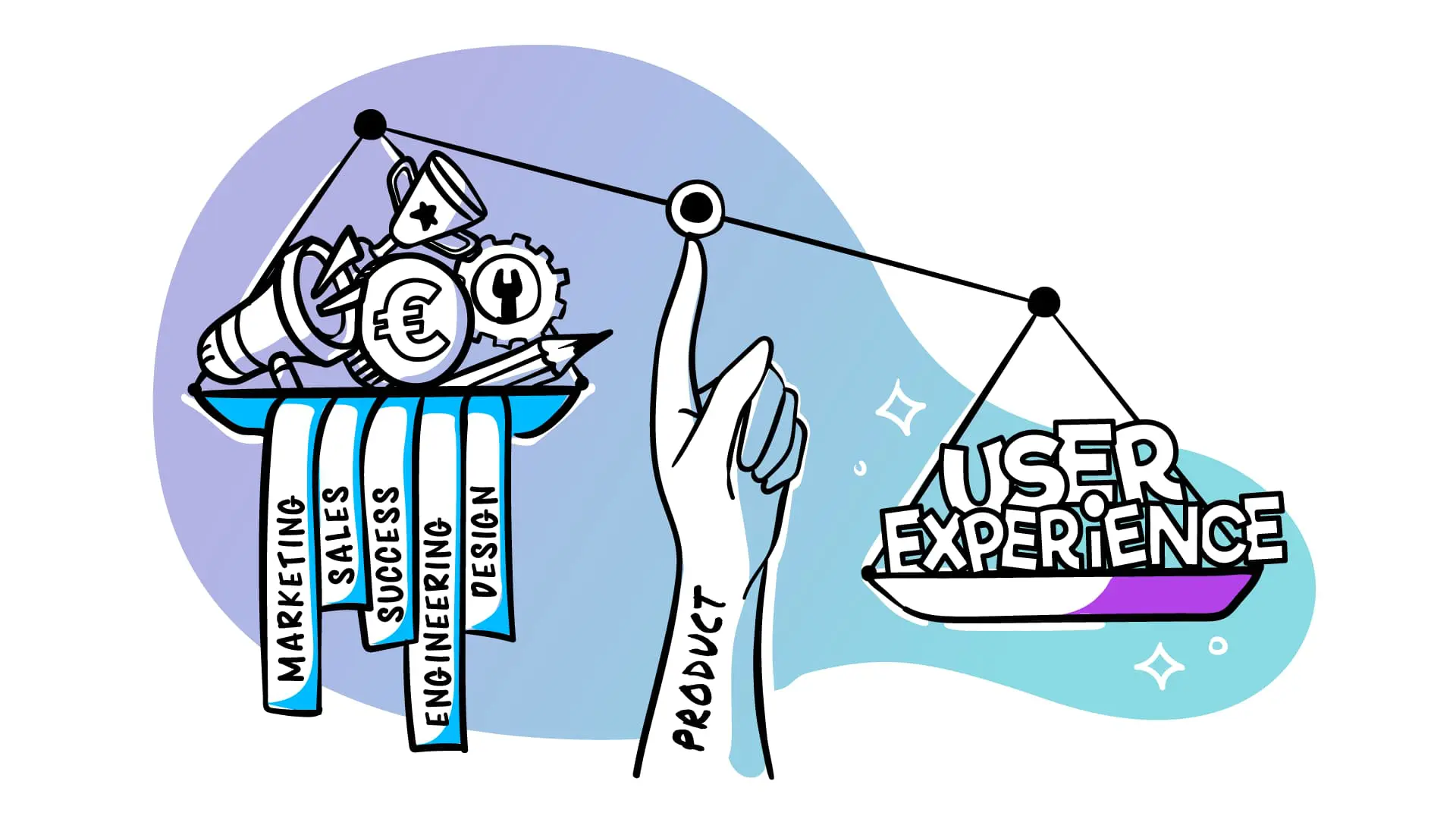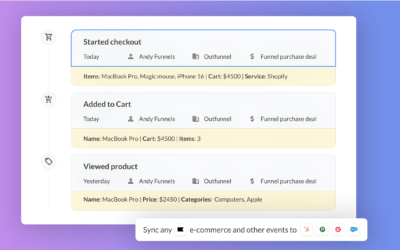Product-led growth (PLG) is a business strategy that focuses on using a company’s product as the primary driver for growth.
“Truly great SaaS companies are built to be product-led.”
Wes Bush, the author of “Product-Led Growth: How to Build a Product That Sells Itself?”
The idea is that a great product will drive its own adoption and growth, rather than relying on external factors such as advertising or salespeople. This is achieved by creating a product that is so valuable and user-friendly that customers will naturally want to buy and use it, and recommend it to others.
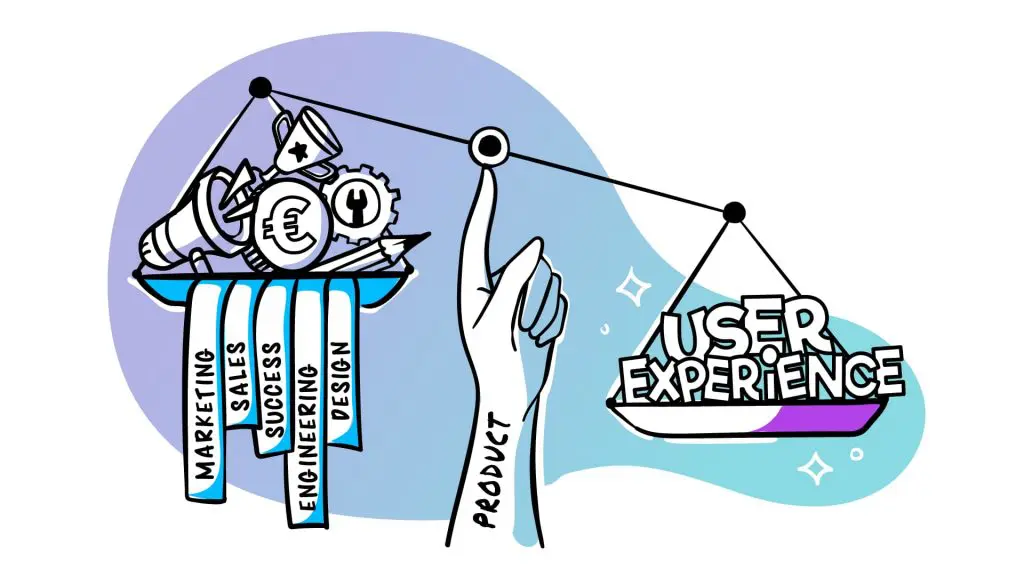
How do you make a decision when buying software? Are you sold by the salespeople or the product itself?
Forrester even forecasted that B2B salespeople will lose their jobs to self-service eCommerce by the year 2020.
TOPICS WE’LL COVER
Key takeaways
- Product-led growth (PLG) is a go-to-market strategy that focuses on using a company’s product as the primary driver for growth.
- A PLG strategy optimizes sales activities, reducing customer acquisition costs.
- To become a product-led company, you must have a product that customers will naturally want to purchase and use, and recommend to others.
The history of product-led growth
The concept of product-led growth has been around for several decades, but it has gained significant attention and popularity in recent years. That’s because technology has now made it easier for companies to create and distribute products directly to customers.
In the early days of software, companies relied heavily on sales teams to generate revenue. Salespeople would go out and sell the product to customers, often through long and complex negotiation processes. This approach worked well for large companies with deep pockets, but it was not as effective for smaller companies with limited resources.
In the mid-2000s, the rise of the Internet and cloud-based software made it possible for companies to distribute their products directly to customers, without the need for a sales rep. This marked the beginning of the shift towards product-led growth. Companies like Salesforce (which offered its CRM software on a subscription-based model) and Dropbox (which used a freemium product) were some of the earliest adopters of this approach.
As the Internet continued to evolve and more companies began to shift towards a product-led approach, the term “product-led growth” started to gain traction. In 2015, the book “Product Led Growth: How to Build a Product That Sells Itself” was published, which further popularized the concept.
In recent years, the rise of SaaS (Software as a Service) and mobile apps has accelerated the adoption of PLG. Product-led businesses like Zoom, Slack, and Asana, have all successfully used PLG to drive rapid growth.

Comparison to sales-led growth
The traditional and most followed approach used to be sales-led growth, where the focus was on the sales funnel. The marketing team generates marketing qualified leads (MQLs) and passes on the sales qualified leads (SQLs). In this case, there are lots of leads that are not interested in your product but salespeople still waste their time by contacting them.
In contrast, PLG strategies focus on customer acquisition through product usage and word-of-mouth, rather than traditional sales and marketing channels. This means that companies strive to create a product that is so valuable and has a marvelous user experience that customers will naturally want to use it, recommend it to others, and pay for it. Additionally, PLG strategies focus on customer retention by continuously improving the product based on customer feedback and providing excellent customer service and support.
“Product-led growth means that every team in your business influences the product. By having every team focused on the product, you create a culture that is built around enduring customer value.”
Allan Wille, Co-Founder & CEO at Klipfolio
There is also a possibility to mix the two strategies. You should make the decision based on what your customers’ needs are and how they want the sales process to be. Keep in mind that the more complicated the product, the longer the sales funnel.
To see the benefits and cons of both strategies, read a more detailed article about product-led growth vs sales-led growth.
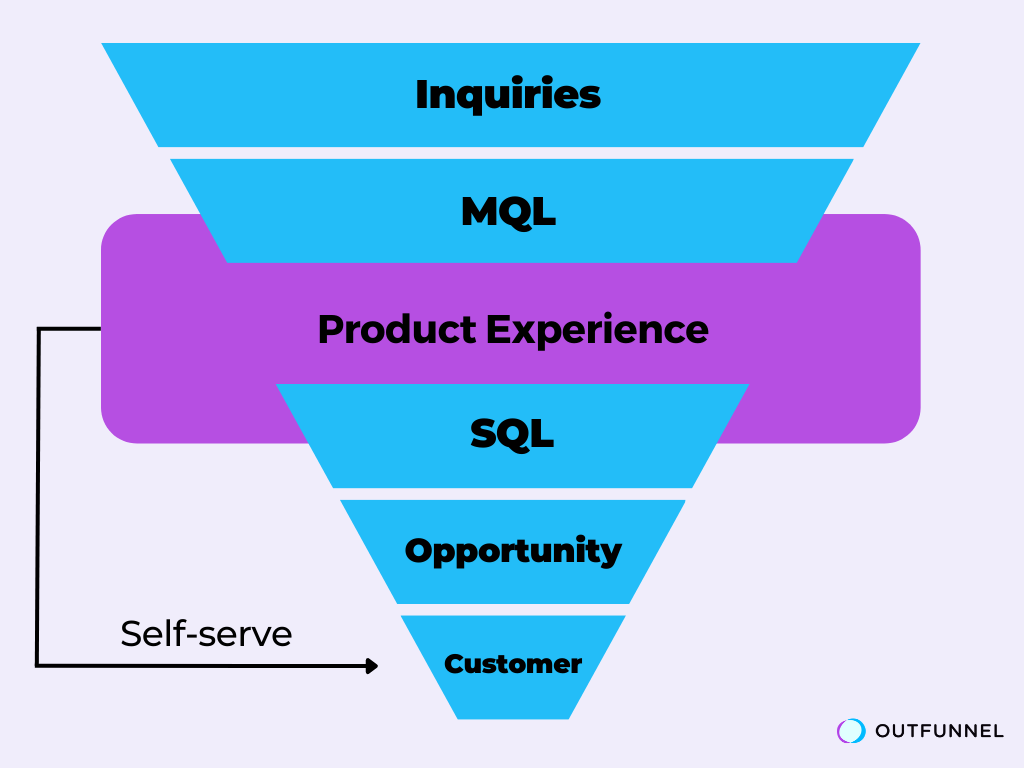
Benefits of a product-led growth strategy
Product-led growth (PLG) strategies offer several benefits for companies looking to drive revenue and growth. Some of the key benefits include:
- Cost-effective: PLG strategies rely on the product’s value and user-friendliness to drive customer acquisition and retention, rather than expensive advertising or sales efforts. This means that companies can acquire and retain customers at a lower cost than traditional growth strategies.
- Scalable: PLG strategies rely on customer acquisition through product usage and word-of-mouth, which is a more scalable approach than traditional sales and marketing channels. This means that companies can acquire and retain customers at a much faster rate than traditional growth strategies because the sales team concentrates on prospects who have already gained insight into the product’s value, reducing the time spent on acquiring a new customer.
- Customer-centric: PLG strategies focus on creating a product that meets the needs of the target audience. This helps to ensure that the product is valuable and user-friendly, which in turn leads to better customer acquisition and retention.
- Data-driven: PLG strategies rely on data and analytics to measure the product’s performance and make data-driven decisions about product development. This helps to ensure that the product is continuously improving and meeting the target audience’s needs.
- Long-term success: PLG strategies focus on customer retention, which helps ensure that the company has a stable base of customers that will keep generating revenue.
Start your PLG journey with our product-led sales platform.
Deep integrations with Pipedrive and HubSpot
How to become a product-led company?
Becoming a product-led company requires a shift from traditional growth strategies to a strategy that uses your product as the primary driver for growth. The most important step is to create a product that is so valuable and user-friendly that customers will naturally want to use and recommend to others.
In addition to product development, a successful PLG strategy also involves focusing on customer retention and expansion. This means that companies must continuously improve the product based on customer feedback.
Here are six steps to becoming a product-led company:
- Understand your target audience: Understand the needs and pain points of your target audience and design a product that addresses those needs in a unique and effective way.
- Invest in product development: Invest in product development, user research, and product marketing to ensure that your product is meeting the needs of its target audience.
- Showcase your product effectively: Display the screenshots of your product on your website.
- Have transparent pricing: Don’t make customers take the extra step of asking you for pricing.
- Offer a free trial/freemium: Give customers a chance to learn about the value of your product for free.
- Identify your “Aha” moments: Identify the key features or moments of your product that will make customers exclaim “Ah-ha” in excitement — for example, after setting up a fast and successful integration.
After implementing these six ideas, consider 5 of these more advanced steps:
- Focus on customer acquisition through product usage: Focus on customer acquisition through product usage and word-of-mouth, rather than traditional sales and marketing channels. The sales team should prioritize their activities based on product usage data to decrease the time spend on dead-end leads.
- Focus on customer retention: Continuously improve the product based on customer feedback and provide excellent customer service and support.
- Use data and analytics: Measure and track your product’s performance with data and analytics, and use this data to make data-driven decisions about product development.
- Adjust the company culture: Align your company culture with product-led growth by making sure all teams understand the importance of product and customer-centricity.
- Measure progress: Track progress through PLG metrics such as Monthly Active Users (MAU), Daily Active Users (DAU), Customer Acquisition Cost (CAC), Lifetime Value (LTV), Churn Rate, and engagement metrics.
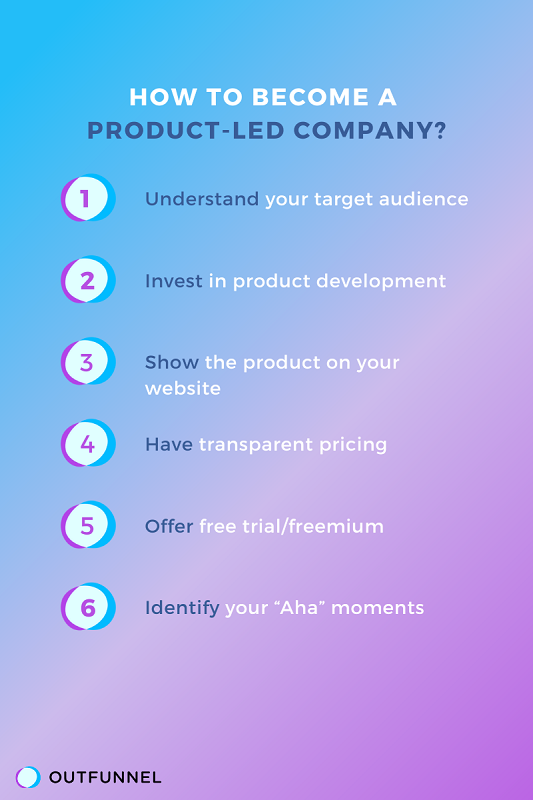
Read how Outfunnel followed these steps to transition to a product-led approach from scattered sales efforts. And Outfunnel isn’t the only company that has done this successfully.
For example, Zoom’s product strategy contained 3 elements: market & needs, key features & differentiators, and business goals.
“The goal was simple, a better service bringing happiness back to customers who want next-generation communication, meaning they want to have better video collaboration experts. It was the first cloud-based video architecture in the world. We wanted to make sure that we can scale our business to have a customer base of millions, to be able to leverage the public cloud like Amazon, Oracle Cloud.”
Eric Yuan, founder & CEO at Zoom
Video meetings had been on the rise since 2016, but the demand for a seamless cloud-based communication platform skyrocketed during the COVID-19 pandemic. Zoom capitalized on this opportunity by making a lot of its key features free to use, which helped them execute a successful product-led growth strategy.
While building the product, they listened to their customers and implemented the key features that were the most asked for. The key aspect was to create a product that is seamless and user-friendly, allowing anyone to utilize it without needing to undergo training. This strategy helped Zoom build a product that sells itself.
Keep in mind that switching to product-led growth doesn’t mean you won’t need a sales team anymore. But you might need a smaller team as salespeople will be able to optimize their activities and contact only “hot leads” (product-qualified leads).
What are the PLG metrics?
Product-led growth (PLG) metrics are key performance indicators (KPIs) that companies use to measure the success of their PLG strategy. The difference is that PLG metrics are the same for every team. Some common product-led growth metrics include:
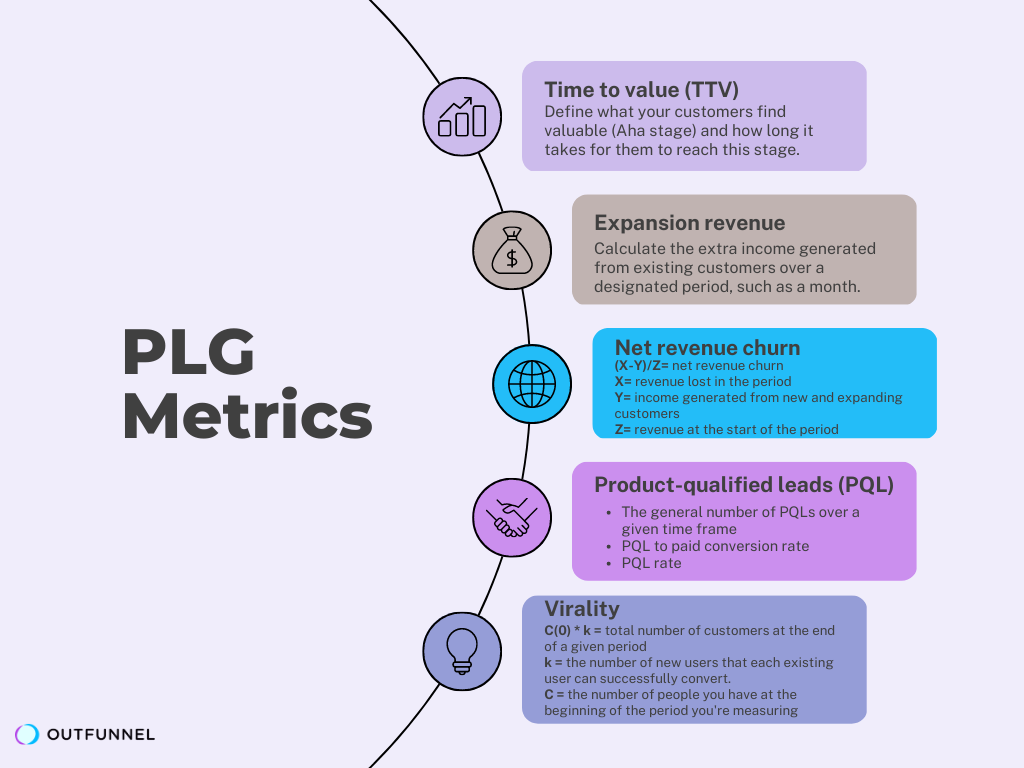
- Time-to-value (TTV) – the time it takes new users to reach their activation event.
The shorter it is, the more likely they will keep using/buying the product.
- Expansion revenue – the anti-churn, the revenue generated from existing customers through upsells, add-ons, cross-sells, etc.
One of the most important metrics in SaaS.
- Net revenue churn – the financial loss when factoring in new and expansion revenue, typically expressed as a percentage.
The lower it is, the greater the revenue.
- Product-qualified leads (PQL) – leads who have already experienced the value of your product.
Usually free trial or freemium users.
- Virality – the average number of new users an existing user can introduce and convert to paying customers. (not necessary during the initial stages of your product)
A high virality metric can lead to exponential business growth.
If you want your company to get the most out of the product-led growth strategy, start by tracking these four metrics. If you want to dive more deeply, consider also evaluating the following ones:
Additional metrics:
- Customer Lifetime Value (CLV): A prediction of the revenue that a single customer will generate for your business during your relationship.
- Average Revenue Per User (ARPU): Measure it by dividing the Monthly Recurring Revenue by the number of customers.
- Free-to-Paid Conversion Rate: The conversion rate from trial to paid users = Number of trial-to-paid users/ number of trial users
- Monthly Active Users (MAU): The number of users who have performed a significant action in your product in the last 30 days.
- Daily Active Users (DAU): The number of users who engage with your product on a daily basis.
- Customer Acquisition Cost (CAC): Expenses incurred in acquiring a new customer.
Why should you measure PLG metrics?
The answer is simple — you can’t be shooting in the dark when it comes to a product-led growth model. The more data-driven decisions you make, the more profitable your company is going to be. Having a clear overview of your PLG metrics will show how successful your product-led strategy is.
PLG metrics are valuable for every team because they help to understand your user behavior and improve your customer journey. For example, sales can prioritize the leads, the product team can prioritize the feature updates and development, and the customer success team sees where users need the most support. It’s even possible to save 80% of the time spent on the onboarding process as it did for us.
“It’s about making sure that we’re decreasing the time to value that customers get when experiencing the product for the first time.”
Liat Bycel, the VP of Sales at Airtable
Is a product-led approach right for your product?
A product-led approach makes a lot of sense, but it’s not always the best approach for every product or company. Here are five factors to consider when determining if a product-led approach is right for your product:
- Product maturity: A product-led approach is most effective for mature products that have a significant user base and generate revenue. This approach may not be as effective for early-stage products that are still gaining traction.
- Product type: A product-led approach is most effective for products that are easy to use and provide immediate value to the user. Products that require a lot of setups or have a steep learning curve may not be well-suited for a product-led approach.
- Target audience: A product-led approach is most effective for products that target a specific audience, with specific needs and pain points. This approach may not be as effective for products that target a general audience or have a wide range of use cases.
- Competitive landscape: A product-led approach may be less effective in highly competitive markets, where customers have a wide range of options to choose from.
- Company culture: A product-led approach requires a company culture that is focused on product development, user research, and product marketing. It also requires a customer-centric approach that focuses on customer retention and continuous product improvement.
To put it briefly, a PLG strategy may be a good fit for you if your product is mature, easy-to-use, and targets a specific audience. Plus, make sure your company culture aligns with PLG before adopting this growth strategy. If your product is a mature one, easy to use, targets a specific audience, and you have a company culture that aligns with PLG, it may be a good fit for your product.
How to start with product-led growth?
If you want to switch to product-led growth but don’t know where to start, Outfunnel can help you. We identify your product-qualified leads so your sales team can forget speculating and immediately see who is ready to buy. We also have the best-in-class CRM integrations, making our product-led sales platform perfect for beginning your PLG journey. Be the first to benefit from insights on your product usage data by signing up for early access.
Optimize sales activities and use Outfunnel to get started with product-led sales.
Spend 35% less time on dead-end leads by using product usage data right in your CRM.
Deep integration with Pipedrive. (HubSpot, Salesforce, and Copper coming soon)

